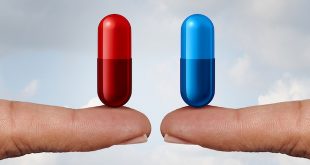The past 20 years have seen tremendous advances in drug therapy for the management of type 2 diabetes, and many new therapies are currently being studied. The latest class of medication that has become available for people living with type diabetes is known as sodium-glucose co-transporter 2 inhibitors – or SGLT2s. That’s a mouthful of big words, so let’s break it down!
Every human body has what’s known as a sodium-glucose co-transporter system, which plays a very important role in overall glucose balance in your body. This system, which is in your kidneys, is responsible for reabsorbing excess glucose in your body.
So, just as their name suggests, SGLT2 inhibitors limit (or “inhibit”) this excess glucose from being reabsorbed. Instead, the glucose is expelled through the urine, thereby lowering blood glucose levels.
The SGLT2 inhibitors have also been shown to lower A1C levels, cause weight reduction and lower blood pressure levels. Just as importantly, they are also associated with fewer incidents of hypoglycemia than other diabetes medications (such as insulin and sulfonylurea drugs).
Of course, they’re not perfect. Side effects that have been reported with SGLT2 inhibitors include dehydration and vaginal yeast infections. In one clinical study, yeast infections occurred in approximately 10% of the study population taking an SGLT2, versus 3% of patients who were on placebo. With proper treatment, these side effects resolve quickly.
The first approved SGLT2 inhibitor for use in people with diabetes was Invokana® (its generic name is canagliflozin) which is manufactured by Janssen Inc. It is an oral drug and is taken once per day, in the morning. Invokana can be taken alone, or in combination with other diabetes medications, such as metformin or insulin.
Other SGLT2 medications have been marketed in Canada, including Astra Zeneca's Forxiga® (dapagliflozin) and more will follow.
 Diabetes Care Community Learn, connect and care
Diabetes Care Community Learn, connect and care



